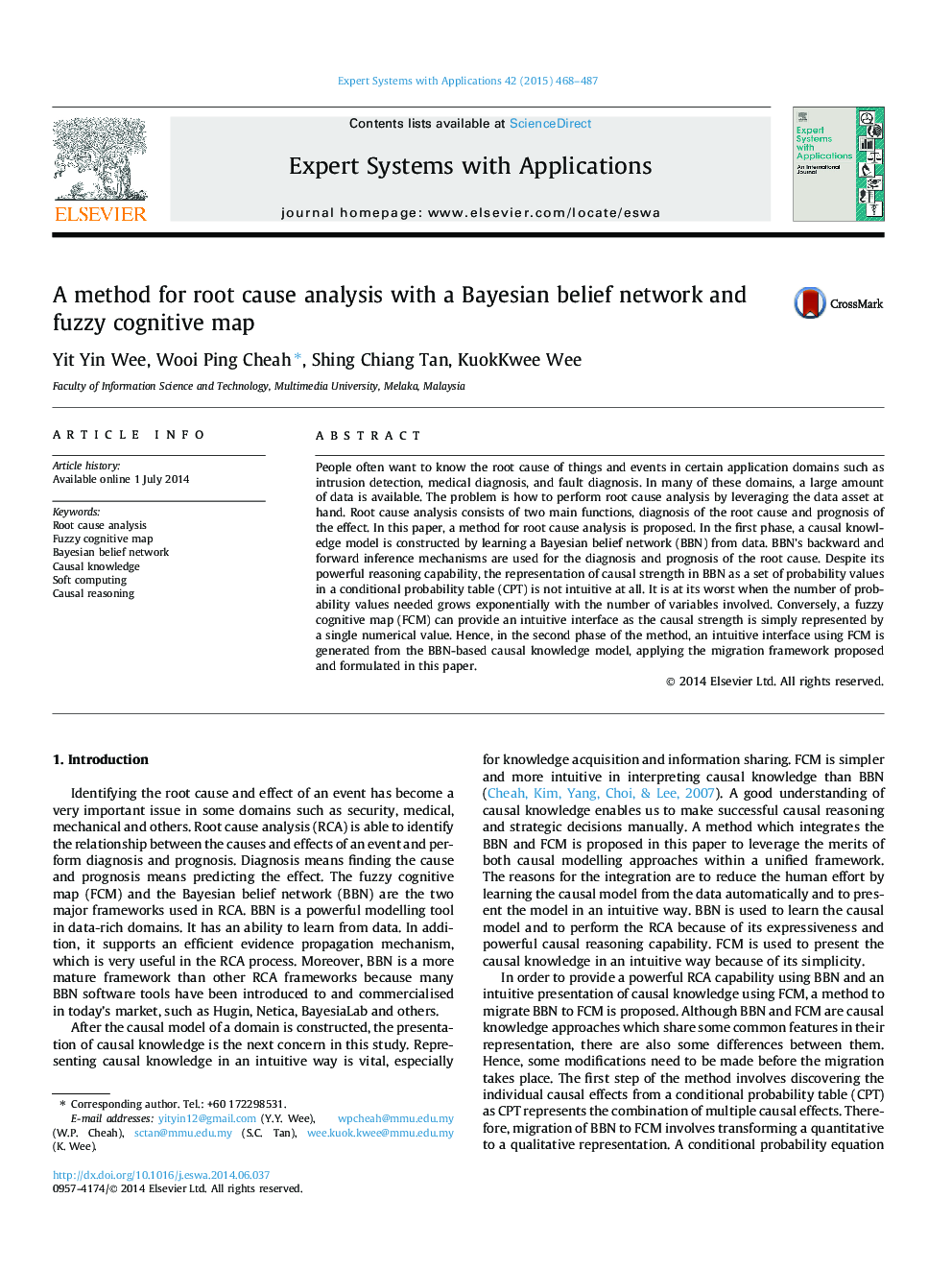| Article ID | Journal | Published Year | Pages | File Type |
|---|---|---|---|---|
| 382951 | Expert Systems with Applications | 2015 | 20 Pages |
•We verify experimentally the accuracy of learning BBN causal model from data.•We demonstrate the effectiveness of root cause analysis using BBN.•We formulate a method for migrating BBN to FCM.•We show the intuitiveness of causal knowledge model represented using FCM.
People often want to know the root cause of things and events in certain application domains such as intrusion detection, medical diagnosis, and fault diagnosis. In many of these domains, a large amount of data is available. The problem is how to perform root cause analysis by leveraging the data asset at hand. Root cause analysis consists of two main functions, diagnosis of the root cause and prognosis of the effect. In this paper, a method for root cause analysis is proposed. In the first phase, a causal knowledge model is constructed by learning a Bayesian belief network (BBN) from data. BBN’s backward and forward inference mechanisms are used for the diagnosis and prognosis of the root cause. Despite its powerful reasoning capability, the representation of causal strength in BBN as a set of probability values in a conditional probability table (CPT) is not intuitive at all. It is at its worst when the number of probability values needed grows exponentially with the number of variables involved. Conversely, a fuzzy cognitive map (FCM) can provide an intuitive interface as the causal strength is simply represented by a single numerical value. Hence, in the second phase of the method, an intuitive interface using FCM is generated from the BBN-based causal knowledge model, applying the migration framework proposed and formulated in this paper.
